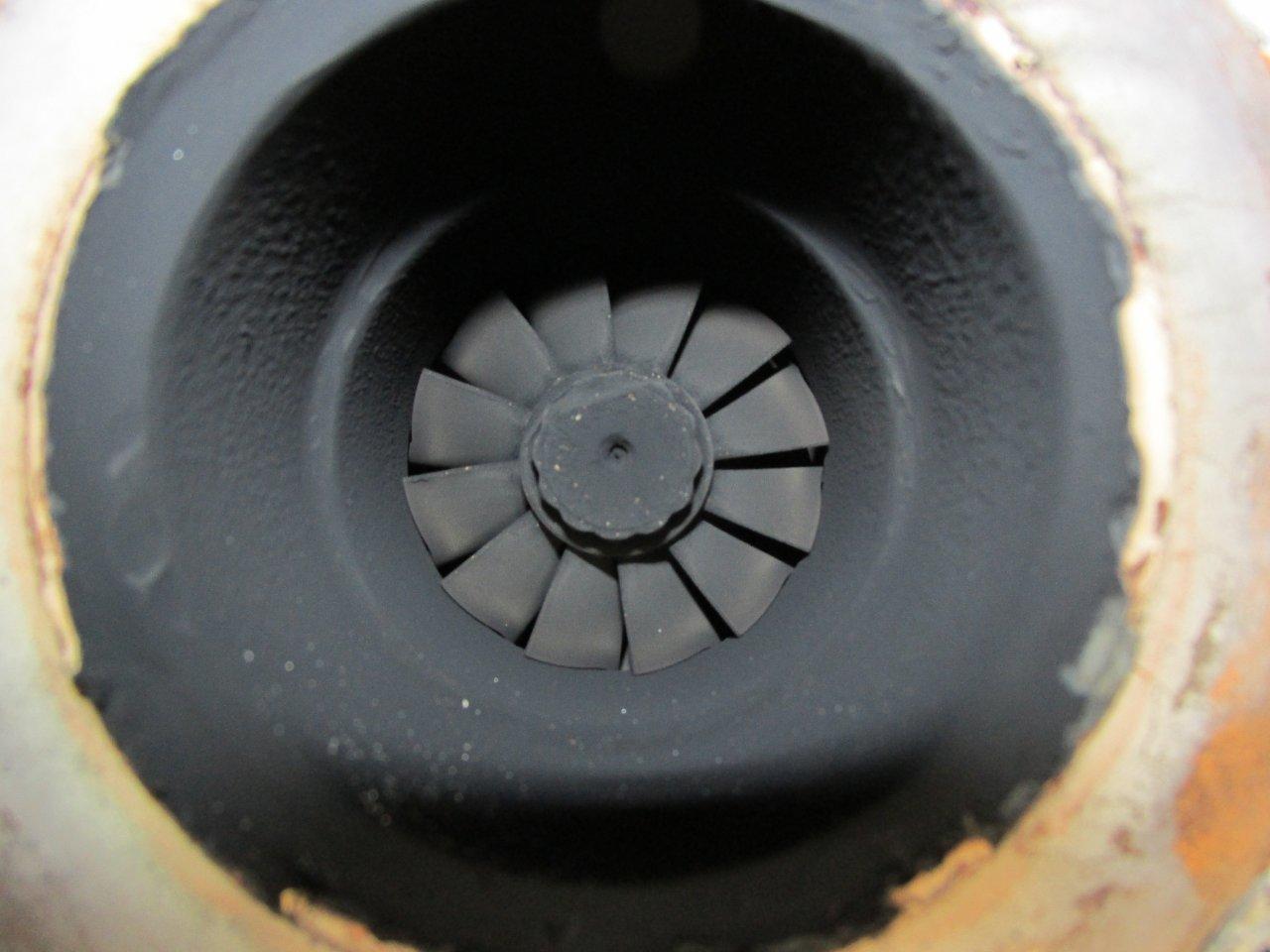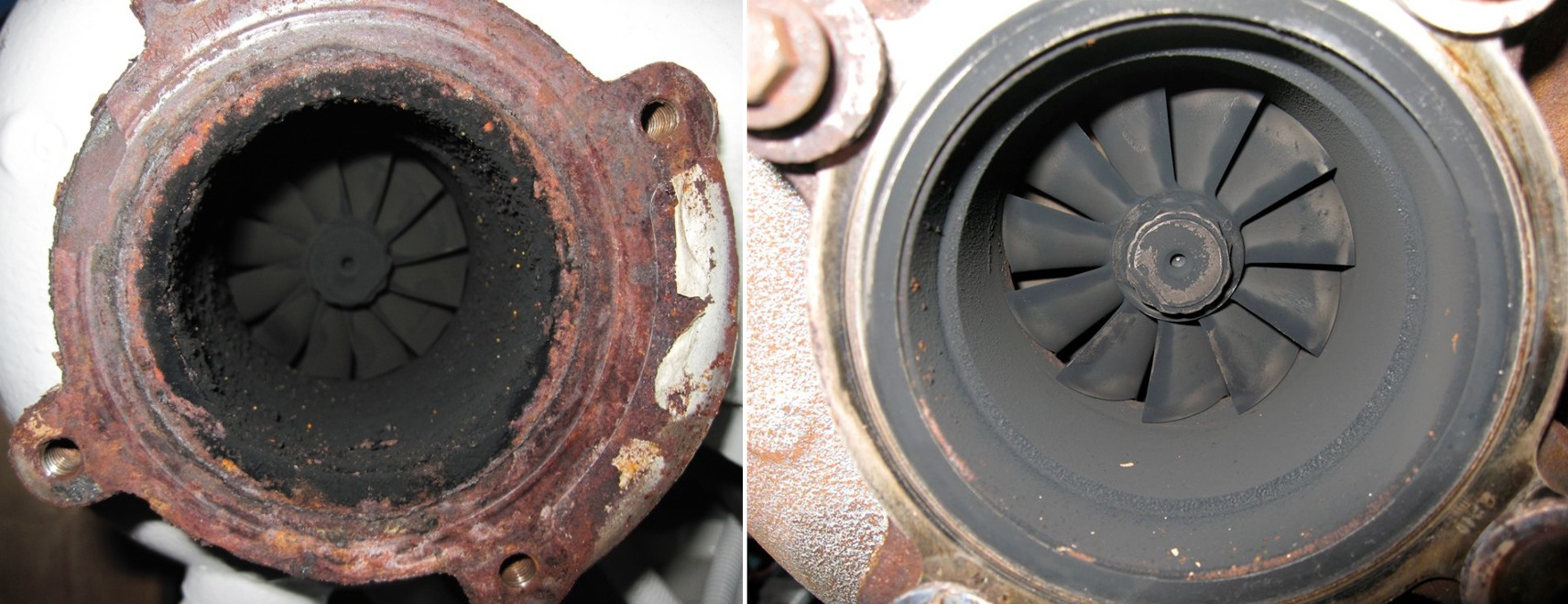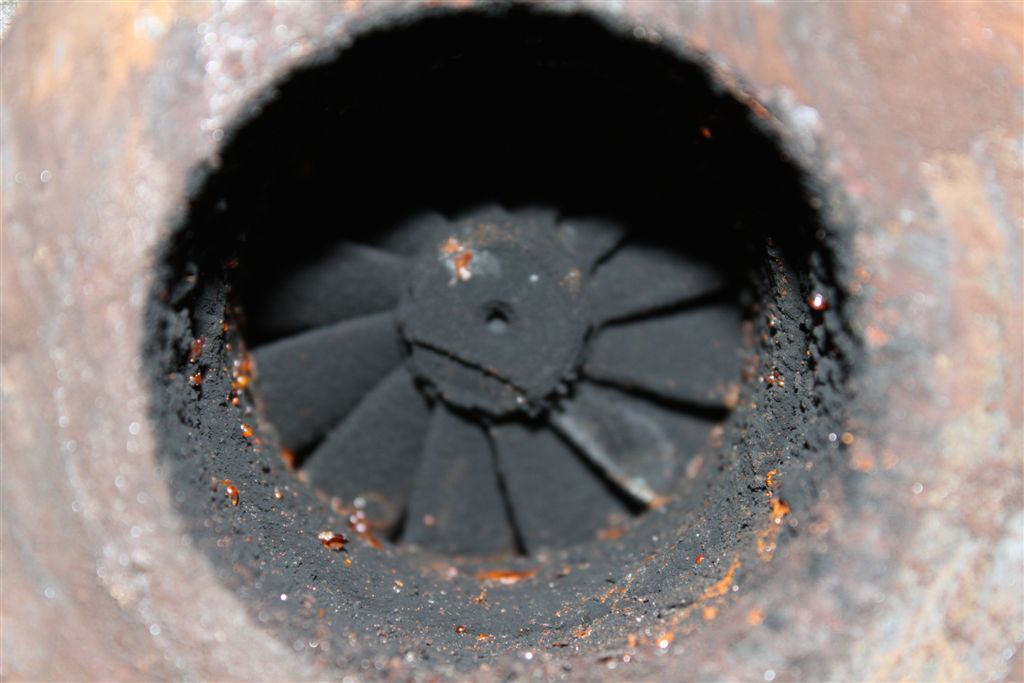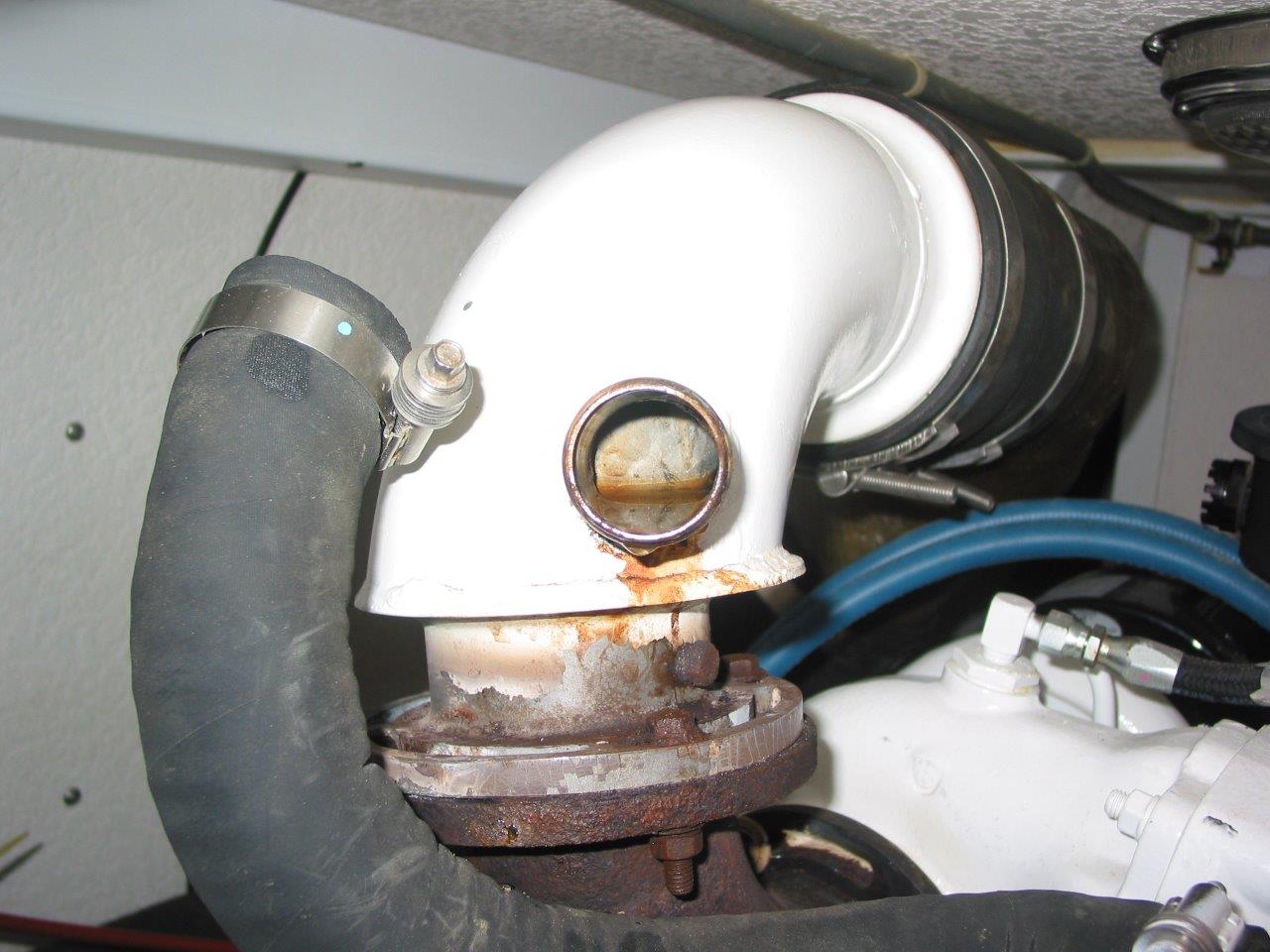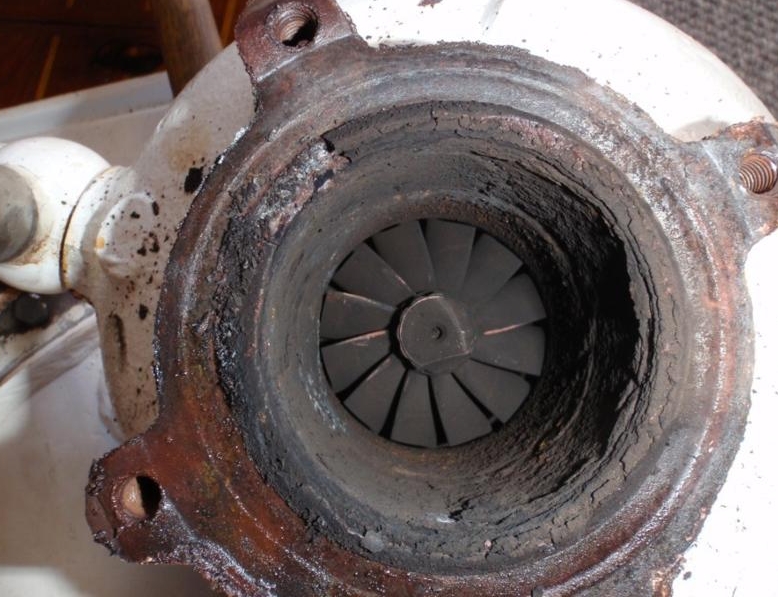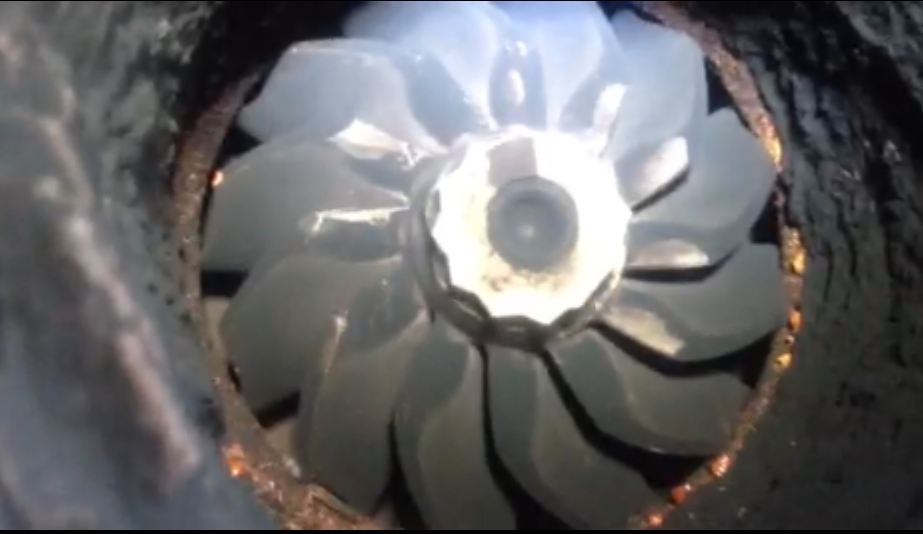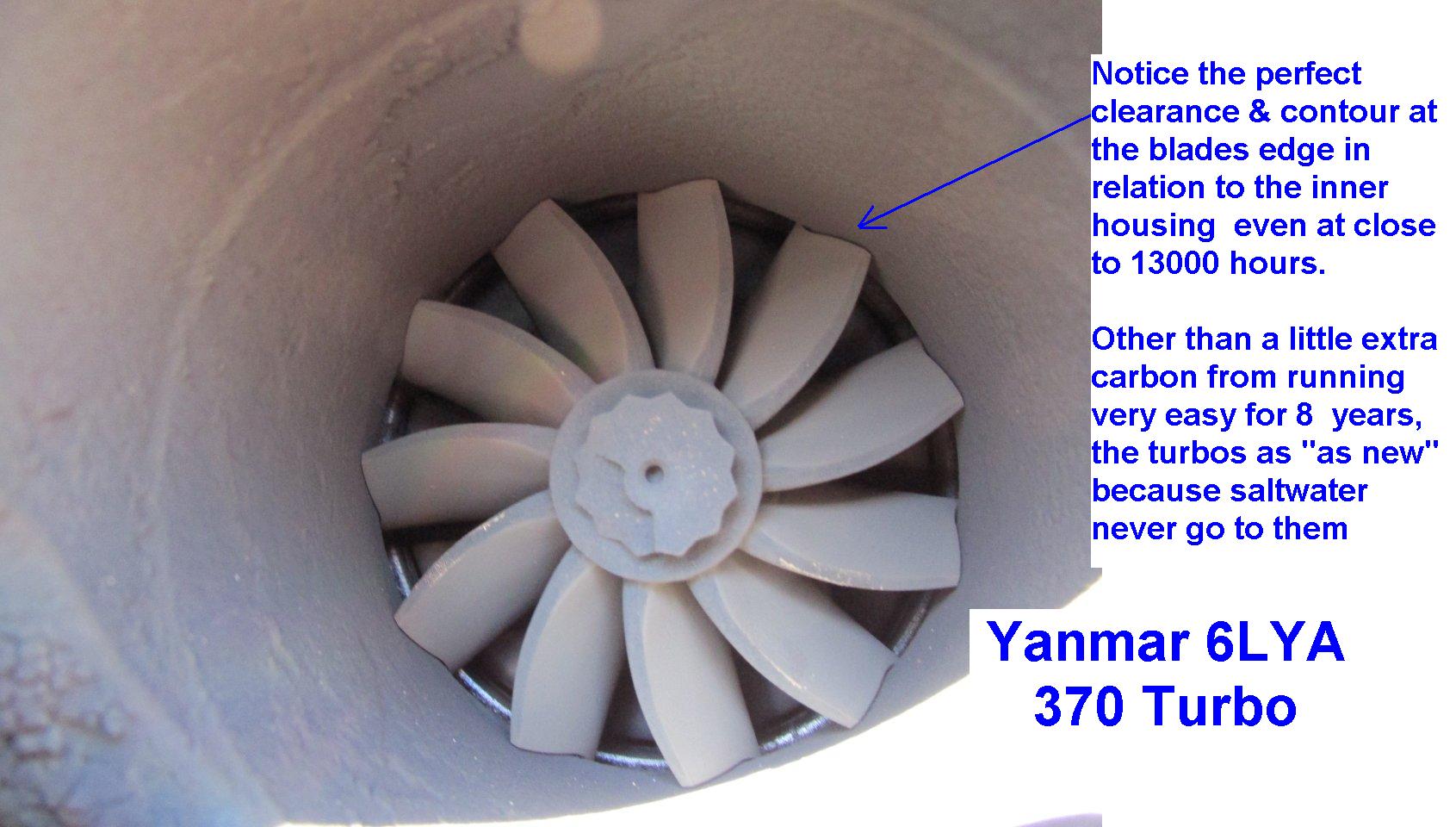It seems that salt water getting into marine turbochargers from poorly designed exhaust systems is a weekly on-going issue in the forums at boatdiesel.com. It also seems that the vast majority of “Cummins techs”, independent mechanics, and boat owners out there have no clue as to what the symptoms are when that occurs. Also, they just about all seem to lack the basic knowledge of what the exhaust side or the “innards” of a turbo should look like when inspected on the exhaust end of the turbo…
Some say that condensation causes the rust, wear, etc. or heavy carbon and crust… I say that is 100% HORSE MANURE and here are just two more examples of WET exhaust systems that have more hours on them than basically any engine typically ever posted about on these forums.
The 42 ft. boat they came from operates in “crap weather” 150 days+ a year and is very heavily laden at times with over 8 tons of product on board. It all comes down to proper exhaust designed for the vessels application. We know that one size never fits all yet we have engine manufacturers and OEM’s that think otherwise and the disastrous results seem to find their way to these forums, but usually after major $$$ has been spent trying to sort out other in-direct issues that were not causing the root problem.
Look carefully at the pictures below… This is what the exhaust outlet side in your turbo should look like! You should see soft velvety type carbon with smooth turbo housing walls. If low hours, the carbon layer is very thin (measured in 1000ths of an inch) and if high hours, and run at low speed, then the carbon may be about 1/32” thick. If you see anything rough and scaly, or any “rust” at all, your turbos are seeing saltwater that is somehow getting back through the exhaust and eventually getting into your turbo… There is NO OTHER explanation regardless of what you have heard or someone has told you. Even some good turbo repair shops are blind to this at times as they just do not understand the application and as soon as “marine” is part of the troubleshooting equation, then they think that the results they see must be normal and a result of the marine environment.
